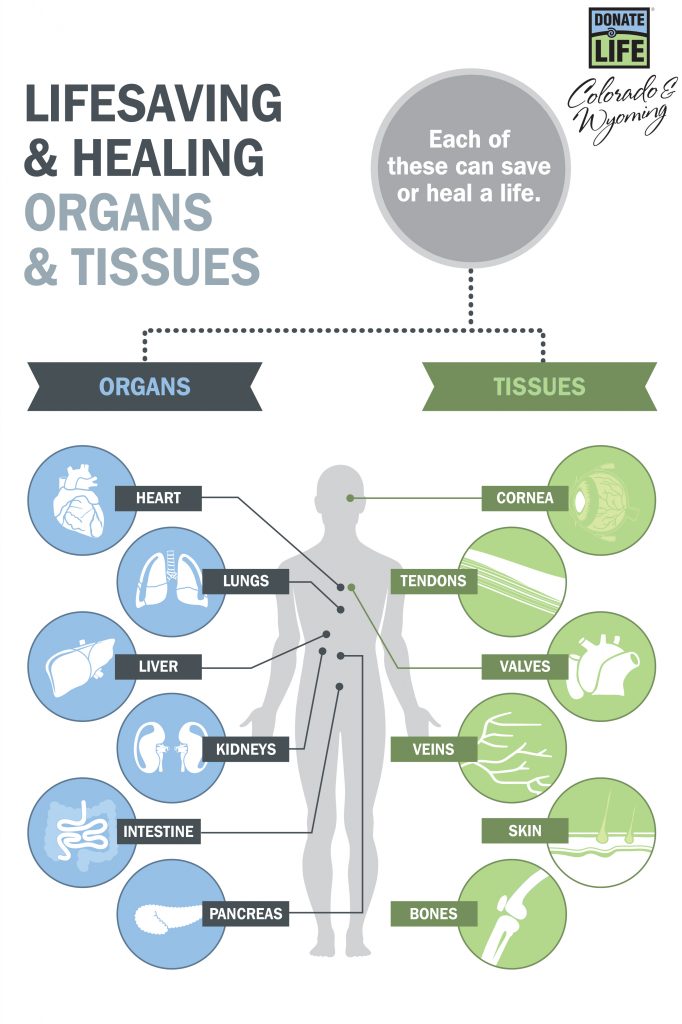Tissue Donation Process
Do you have any questions about the tissue donation process? We have compiled some of the most frequently asked questions about tissue donation, including a step-by-step description of how this process works.
What tissues can be donated?
When talking about tissue donation, it’s important to know that not all tissues can be transplanted. The tissues that can be donated and transplanted to those in need include: Corneas, bone/tendons, skin, heart valves, veins/arteries and other cardiovascular tissues can be transplanted.
How is tissue donation different from organ donation?
Tissue donation differs from organ donation in several ways. First, there is no waiting list for most tissue transplants, and the tissues are available when someone needs them. While donated organs have to be transplanted within hours of recovery, tissue donations can be preserved and transplanted for up to five years. Donated tissues can be used to help and heal people in several different and meaningful ways.
Tissue donation saves and heal lives
Tissue donors have the potential to save and heal dozens of people. In fact, one single tissue donor can save and heal more than 75 people through his/hers donated gifts.
Every year, tissue transplants provide lifesaving and healing hope to tens of thousands of people suffering from disease, injury, trauma or blindness. For example, bones and tendons can be used to replace or reconstruct tissue destroyed by tumors, trauma or infection, saving limbs that would otherwise be amputated and donated skin is critically needed for patients suffering from burns or trauma. Learn more about how tissue donation can help those in need.
Does tissue donation affect funeral arrangements?
When tissue donation takes place, great care is taken in the recovery of tissues to ensure presentation of the body for funeral purposes. Generally, donation will not delay funeral arrangements, and tissue donation does not interfere with an open-casket funeral for the donor.
Here’s how the tissue donation process works:
- Death Occurs – When a patient dies, the hospital staff notifies family members. Federal regulations mandate that the hospital notifies an organ procurement organization, such as Donor Alliance, of all deaths occurring there. Available 24 hours a day, seven days a week, Donor Alliance receives and coordinates organ and tissue referrals in our service area, which includes over 100 hospitals.
- Assess Donation Possibility – The deceased patient is assessed for suitability for tissue donation, based on criteria such as age, cause of death and medical history.
- First-person Authorization – Donor Alliance will check the Organ & Tissue Donor Registry to determine if the person is a registered donor. If he/she is a registered donor, Donor Alliance will inform the family that their loved one decided while he or she was living to give the gift of life through tissue donation. Donor Alliance maintains a legal obligation to observe all end-of-life decisions, including donor designation. The states of Colorado and Wyoming recognize this as a legally binding decision. Donor Alliance and all hospitals are legally obligated to honor advance directives, including organ, eye and tissue recovery decisions by the patient.
- Approach Family about Donation – If a person has the potential to be a donor but has not registered, Donor Alliance contacts the family and presents the option to donate. If family members are interested in donation, they must agree to an authorization form that itemizes each tissue they want to donate.
- Gather Information – The family must also answer a medical/social questionnaire (similar to those asked when a person donates blood). These questions are asked for the protection of the recipients and to screen for communicable diseases, such as HIV and hepatitis. The medical history then is examined to ensure the tissue is suitable for transplantation.
- Recover and Transplant Tissue – If the donor’s tissues are eligible to be donated, a surgical team recovers them in an aseptic surgical procedure. To show respect to the donor, any incisions are closed and the body is reconstructed in a way that will still allow a viewing or open casket funeral. The recovered tissues are then used to create numerous grafts for transplant.
Donor Alliance partners with several tissue processing facilities
Hopefully, we have answered all of your questions about how the tissue donation process works, but if you still have questions, feel free to connect with us on our Facebook pages at @DonateLifeColorado or @DonateLifeWyoming or call Donor Alliance at (303) 329-4747 or 1-888-868-4747.
